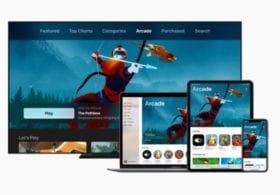| Opening Minds and Opening Doors
Cathy Applefeld Olson
Diversity, equity and inclusion. The three words are reverberating more than ever across the television, digital and greater entertainment landscape. But actually achieving these goals is another matter. In partnership with Discovery, Cynopsis’ Diversity and Inclusion virtual event on September 13 dove into best practices for how companies in our industry can deliver messages that embrace diversity and share business values in a way that authentically resonates with consumers.
Sheereen Russell, SVP Ad Sales and Inclusive Content Monetization Strategy, OWN – The Oprah Winfrey Network, kicked off with a keynote that focused on the importance of all audiences being able to see themselves authentically on screen—work that begins behind the scenes.
“If you look to the left and right on your Zoom calls and everyone looks the same in your department, there’s an opportunity for change,” Russell said. “If all of your stories reflect one particular narrative, there’s an opportunity for change. If you’re finding the people you hire often look and reflect he same priorities and it’s led through one portal of nepotism, there’s an opportunity for change.”
DEI: The Activation Conversation
This March, OWN launched a #WriteHerRight initiative for Black women in conjunction with the ANA’s SeeHer program, whose mission is to eliminate gender bias against female characters through explicit guidelines for content creators, storytellers, showrunners, actors and network execs.
“Inclusion is now a business imperative. We are very intentional with the language and tips so they can eliminate gender bias from the onset, as they are beginning to think of character development and storytelling,” said Jeannine Shao Collins, president of SeeHer.
Noted OWN’s Russell, “This is an opportunity for intersectionality around Black women, a unique nuance and specificity for them from understanding colorism nuances to body shape, and how we show up in certain roles.”
As well as authentically presenting characters and storylines, initiatives like SeeHer also have a ripple effect, sparking other difficult and important conversations. “It gives curiosity and confidence to all people who are unique in their own way to speak up,” says Damon Jones, chief communications officer at P&G. “They act as a catalyst to make inclusion an everyday thing, not the exception.”
P&G’s Widen the Screen initiative, which literally broadens the lens on scenes featuring diverse audiences in real time, shines a bright light on racial and gender bias. “Stories of marginalized communities are often told on the margin or the extremes—extreme success or extreme struggle,” said Jones. “There is so much more to see and we wanted to make a deliberate attempt to cause people to stop, pause and reflect and broaden their lens.”
As companies begin to broaden their own lens, moderator Tara DeVeaux, CMO of Wild Card Creative Group, pondered aloud, “What are the critical questions every writers room should have in front of them that would require the writers to get it right?” She noted that as diversity behind the camera and on-screen is growing, the conversation is beginning to move away from tokenism. “It’s happened less and less over the last couple of years, but still happening,” she said.
Additional #WriteHerRight storytelling guides are on the way. A Latina storytelling guide will launch September 30 for Hispanic Heritage Month, and an AAPI female guide will follow.
Programming; What’s New And What’s Next?
As production companies and programmers look beyond casting to embrace holistic DEI, creating a tangible framework to reconsider tone, topics, filming techniques and more are critical in moving away from monolithic audience strategies.
When it comes to the familiar trope of the “pipeline problem,” Ben O’Keefe, head of diversity and impact development and production for Creator+, had strong words. “The pipeline problem is BS because it’s a problem we create,” he said. “We are the plumbers, we have to be in the business of laying the pipes.” To bring true equity, O’Keefe said, companies “need to overinvest” in historically ignored communities.
“People are identifying home in a different way than they used to 18 months ago. It’s our responsibility to show how people from different cultural backgrounds, races and ethnicities live in their home,” said Loren Ruch, group SVP of development and production for HGTV, who said the network is striving to represent a broader array of cities and family structures to better “understand what home means and have better representation for all who are watching us.”
At Food Network, Todd Weiser, SVP of programming and development, said the network is rethinking the biases its producers may unknowingly be bringing to the table. “This includes not always going to the same well we’ve gone to for stories and talent,” he said. “Historically networks do more receiving; we’ve done more outreach than ever in the last 18 months” as the network has had “a real reckoning about our content, who we work with and what were green-lighting and saying yes to.”
Michela Giorelli, VP of production and development for Discovery Networks Latin America/US Hispanic, said it’s critical that as programmers seek to represent greater diversity, they be inclusive of the entire tapestry. For example, the Hispanic community, she said, “is full of so many heritages from so many countries with different dialects, colors, accents. We make a really conscious effort to represent them.”
As a way to amplify equity, Discovery has instituted a companywide program through which trainees in a variety of roles can receive on-the-job training from entrenched Discovery staffers. “We’re looking to make sure we are getting people at all levels,” said Drew Tappon, head of unscripted development at OWN. “We’re finally seeing some real movement.”
Authenticity In Storytelling
Consumers today can sniff out authenticity a mile away, but it’s a delicate balance for Black, Latino and other on-screen talent to walk their talk, and keep their audience, in a still-evolving industry.
“My truth is that I am still trying to find that balance,” said HGTV host Page Turner. “I go from professional real estate broker and being super aware that my audience is mostly white and curbing my urban chic side… but I have both sides.”
Yet maintaining individuality is key to holding viewer interest. “If you’re being watered down to fit a certain audience of course it’s going to be duller,” said Dr. Ebonie Vincent, host of TLC’s “My Feet Are Killing Me.” “By not watering us down, you could reach so much more, and a more diverse base,” she added. “When you are real, you have value.”
“If you’re trying to sell yourself as something you’re not, it’s going to backfire,” said Chef Grace Ramirez, a host on Hogar de HGTV, the Spanish-language network Discovery launched last June.
Showrunners and producers have a big role to play, noted moderator Toni Miceli, CEO of RTR Media. “We need to even shoot it differently, and our crews need to be different.”
Ramirez noted before 2020 a lot of non-white talent were set up for failure, and offered advice to production companies to help keep moving the needle forward. “I highly encourage executives to have an advisory board and have real conversations with talent in order for us to be set up for success,” she said.
As programs, creators and executives are opening their minds and doors, more talent are able to create their own path forward. During the pandemic, “I decided to create my show and pitch it and that’s how I became EP and host and creator,” Turner said. “I knew nobody would be able to tell my story as well as me, so I stayed true to myself.”
To access the event on demand, go here: https://events.accessintel.com/event/diversity-and-inclusion-virtual-event/event-access/
|




